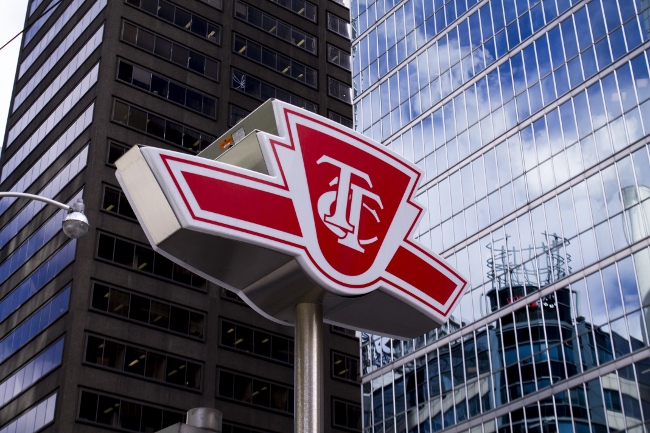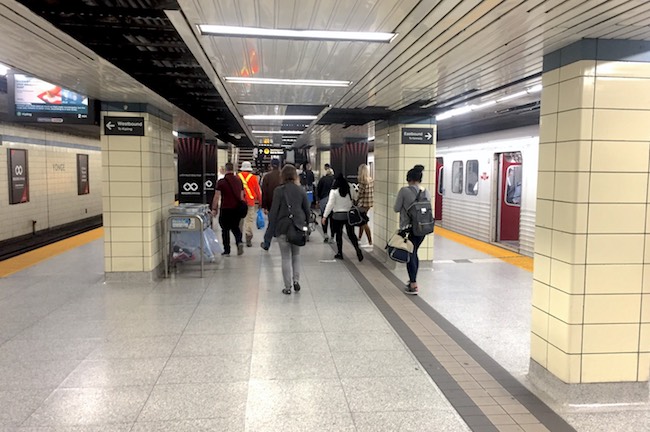
Canada’s busiest subway station to get overhaul as feds commit nearly $1.1B to two Toronto transit projects
By David Kennedy
Construction InfrastructureThe complex construction project will add another platform to the lower level of Bloor-Yonge Station to help tackle overcrowding

About half of the $1.1 billion in federal funding will go toward supporting a Toronto Transit Commission project to upgrade its busiest station
TORONTO—Two major Toronto transit projects, including one that will address overcrowding at Canada’s busiest subway station, got a boost Aug. 26 from a federal government announcement that promised nearly $1.1 billion to improving the city’s transit infrastructure.
At an event in Scarborough earlier this week, Ottawa committed $585 million to build six new stations that fall under the long-promised SmartTrack program, as well as $500 million to support much-needed upgrades at Bloor-Yonge Station — by far the busiest station in the Toronto subway network.
Several hundred thousand commuters board trains on three busy subway platforms at Bloor-Yonge Station every work day. The two-level hub serves both of Toronto’s busiest subway lines and increasing ridership has raised alarms about overcrowding.
“The Bloor-Yonge Capacity Improvement project is critical to accommodate long-term TTC ridership growth on Line 1 Yonge-University and Line 2 Bloor-Danforth,” said Jaye Robinson, a city councillor and chair of the TTC, in a release. “This station expansion will improve capacity at one of the busiest transfer points in North America.”
Last year, an average of 204,630 people boarded Line 1 trains on the upper level of the station each day, according to the Toronto Transit Commission. Line 2 boardings deeper underground totalled 196,460 each day.
Unlike the upper level of the station, however, which has side platforms for passengers separated by two sets of tracks, the lower level of Bloor-Yonge has a central platform, or island, with tracks running along each side. The design means westbound and eastbound travellers are crowded onto a single platform — an increasingly dangerous prospect as ridership continues to rise.
The station upgrade project will tackle the issue by adding a second platform on the lower level of the station.

The lower level of Bloor-Yonge station serves nearly 200,000 passengers each day. Its central passenger platform running between two tracks is seen as a safety risk as ridership numbers climb
Once the complicated construction project is complete, riders on Line 2 heading in different directions will each have their own platform. The project also includes less significant upgrades to the upper platform that serves Line 1 and the construction of a new electrical substation.
The TTC estimated earlier this year the total cost of the station improvement work would reach $1.05 billion. The federal government funding will cover about half the project costs and the Ontario and Toronto governments are expected to foot the remainder of the bill.
Ottawa’s contribution to the SmartTrack Stations Program, meanwhile, could kick-start work on the rail project that was first proposed by Toronto Mayor John Tory during his 2014 election campaign.
SmartTrack is designed to bolster local service by taking advantage of existing GO Transit lines, but the plan has been slow to get off the ground. Last year the city pledged funds to move ahead with the planning and procurement process, but the turnover in provincial government last June and the Progressive Conservative’s top-down approach to transit added uncertainty this spring.
The federal govenrment said its $585 million in backing would help pay for six new SmartTrack stations along the Stouffville, Lakeshore East and Kitchener GO rail corridors.
As with the upgrades and Bloor-Yonge Station, the province and city will be responsible for setting aside the remaining funding for the new stops. Both lower levels of government participated in the federal announcement in Scarborough this week, but did not highlight their own spending plans. A timeline for the work was not revealed.




